Leon Schwartz of the Southeastern Iowa Synod and Carla Christopher of the Lower Susquehanna Synod are co-chairs of the Commission for a Renewed Lutheran Church.
When Carla Christopher, co-chair of the Commission for a Renewed Lutheran Church (CRLC), began the group’s “season of listening” across the entire ELCA, she expected to hear disagreement over the church’s core mission. Instead, what people said surprised her.
“We heard, ‘We are gathered as faith communities around word and sacrament and love of neighbor. We are honoring vocation,’” she said. “I mean, it was like reading Luther’s Confessions. And this is coming from young people, this is coming from BIPOC (Black, Indigenous and people of color) people. People’s understanding of the importance of what sacrament and word and love of neighbor and vocation call us to, look different based on social location and geographic context. But this community is devoted to the church and to those core ideals that have gathered us, from before the ELCA even existed, more than I thought I would be hearing.”
Prompted by 10 memorials from synods, the 2022 ELCA Churchwide Assembly voted to establish a commission that would “reconsider the statements of purpose for each of the expressions of this church [and] the principles of its organizational structure … being particularly attentive to our shared commitment to dismantle racism.” The following spring, the ELCA Church Council appointed to the commission 35 rostered ministers and lay leaders from across the denomination, and that July they gathered at the Lutheran Center in Chicago to begin their work.
The first finding was “a desire to realign number/distribution of synods and their function including a possible separation of pastoral/congregational care and administrative responsibilities.”
Last month, Christopher and co-chair Leon Schwarz checked in with the council to present their findings from the commission’s listening campaign, patterned after the feedback sessions for ELCA social statements. The CLRC conducted more than 65 online listening sessions with ELCA members across the country, and a written survey prompted more than 1,400 submissions. Every synod offered its members an online session, the survey or both, and other listening sessions with ELCA-related institutions, organizations and ministries drew Lutherans from multiple synods.
Speaking to Living Lutheran a few days before the Church Council presentation, Christopher expressed excitement at the range of people who participated. “The diversity of the group that responded was greater than the diversity of the ELCA,” she reported. “We saw a lot higher percentage of nonwhite people than are actually present in the ELCA as a whole. We saw people from a broader geographical range, whereas the ELCA can be very geographically concentrated in certain areas.”
The co-chairs stressed four key findings from the listening campaign, quoted here from their PowerPoint presentation to the council. The first was “a desire to realign number/distribution of synods and their function including a possible separation of pastoral/congregational care and administrative responsibilities.”
“There’s an angle to that,” Schwarz explained. “People want [65] bishops but [think that] separating the administrative and regulatory functions from the bishop’s function and purpose, as pastor to the congregations and pastor to the pastors, would be a good thing.”
“We don’t necessarily need 65 administrative offices that we’re maintaining,” Christopher added. “But congregations and rostered leaders need more care than ever. It’s rough out there in these community streets. People are recovering from COVID, they are … ministering in this incredible season of division and change, and people want care and support. … Are there better ways to distribute and share some of the pastoral care work or some of the administrative work, the congregational support? We’re hearing that a lot from our congregations, from our rostered leaders.”
Respondents also asked for greater balance “between accountability and flexibility in relation to congregations’ and rostered leaders’ adherence to social statements, funding/sharing of resources, communication with congregations, issues of discipline, etc.”
Christopher took care to illustrate this with concrete examples, beginning with the question of discipline. “We know that we have the [recommendation] not just [from the churchwide expression] but … the synodical levels, and individual rostered leaders make that commitment, to make sure that they have some sort of cultural competency training along with things like healthy boundaries, mandated reporting [of abuse], stuff that we really need to do to keep the church a safe place,” she said. “But is that available for staff people? Is that available for people on call committees? Is that available for our lay leaders? A lot of that depends on the economics and the technology capacity of different synods.”
Respondents also asked for greater balance “between accountability and flexibility in relation to congregations’ and rostered leaders’ adherence to social statements, funding/sharing of resources, communication with congregations, issues of discipline, etc.”
Accountability, she said, factors into the efficacy of the church’s social statements and messages. “The members of the commission and a lot of the people in our listening sessions lifted up the social statements as a big part of the reason they were part of the church,” she said. But, respondents argued, “not every place across the country is even aware of all of the social statements and what’s in them. I get it—[these] are very dense documents and have a lot of years of work and theology and study behind them. But if folks don’t know that they exist or have not had a chance to engage in study of them, are the things [called for] in our social statements really happening across the wider church? Probably not.”
Other respondents asked the church to “clarify purpose statements and constitutional language to increase accessibility of essential tasks and remove language that is not currently useful while uplifting core commitments of not only who we are but who we want to be, which includes a resourced commitment to antiracism.”
As Christopher pointed out, “constitutional language” can be especially opaque to people with little experience of constitutional government. “We have so many immigrant congregations, we have some really important relationships with our global partners,” she observed. “And many of the countries we work with are not from places that an American, last-few-hundred-years style of constitutional governance is their standard.
“So is there a systemic level of racism just based in how we determine what we’re doing and how we’re doing it? It’s wonderful to include voice and vote of all people. But the idea of majority rules, or a representational government where a few people make the vote and the decision on behalf of the large group of people? That’s not always helpful with marginalized voices. So really examining, who takes part in churchwide assembly? How are decisions made? That’s come up a lot.”
Other respondents asked the church to “clarify purpose statements and constitutional language to increase accessibility of essential tasks and remove language that is not currently useful while uplifting core commitments of not only who we are but who we want to be, which includes a resourced commitment to antiracism.”
Last of all, the co-chairs informed the Church Council, respondents talked about prioritizing “voice, vote, protection, resource, and recognition of the essential nature of RIOMs (Related Institutions, Organizations & Ministries) as valid expressions of the church and centers of innovation, faith formation, and public witness.”
Such expressions might include ethnic-specific organizations of the ELCA, campus ministries, Lutheran summer camps and the many idiosyncratic ministries that have sprung up around the country as the church tries out new ideas to welcome people on the margins.
“There are a lot of regions and synods who are doing some very innovative work with their conferences and with their regions,” Christopher said. “But those groups don’t exist constitutionally. Constitutionally, a region is not a thing nor is a conference. So there are no purpose statements, there are no duties, there are no resources for those entities. … How are we making sure there’s voice and vote and real inclusion for the areas where innovation is happening? Folks who are not necessarily a traditional congregation or synodical office or part of churchwide but are very much key to the expression of the ELCA.”
Respondents talked about prioritizing “voice, vote, protection, resource, and recognition of the essential nature of RIOMs (Related Institutions, Organizations & Ministries) as valid expressions of the church and centers of innovation, faith formation, and public witness.”
Christopher was reluctant to generalize about the church’s ethnic-specific organizations but pointed to “a shared awareness that [their] involvement isn’t constitutionally protected. So even if we have some really powerful things happening right now, do we know that that’s sustainable for the future, or is it dependent on the current bishop, is it dependent on who’s involved in what synod? Each one of the ethnic associations is largely independently resourced and independently governed because they are their own separate organizations. So … how are we making sure that the partnership is mutually beneficial and that we’re ensuring that these important ministries are able to continue and able to be an active part of the ELCA, not just now but going forward?”
Apart from these four major concerns, Schwarz remarked that many respondents wanted to “skinny down” the church’s governing documents. “There’s too much!” he said. “They’re voluminous. Coming from the farm, my analogy is, this garden was planted 40 years ago with the merger, and we’re continuing to eat out of that garden. But I tell you, the strawberries have taken over in one area and the weeds have taken over in another area, and you can’t plant something here because you planted something there before. There’s just too much in there. [Furthermore,] very few people read these documents. They’re not accessible to people readily, and we need to make them more accessible. We need to make them more readable, more understandable to people.”
Christopher said she was heartened by the number of respondents who took an international perspective on the ELCA, its mission and its ecumenical commitments. “Even in our congregation listening sessions in very rural areas, there have been a lot of folks thinking about bigger pictures,” she revealed, “which, I think, goes against the common stereotype that people are not necessarily thinking on a global level. What we’ve found is, they are. They are concerned and have real care about what’s happening in the wider world, as well as what’s happening in their community.”
The CRLC, Christopher said, is planning a few more outreach efforts to hear from ethnic-specific ministries and from young Lutherans, especially at the ELCA Youth Gathering this summer. It will also incorporate survey responses and data from the ELCA’s new initiative Future Church: God’s Love Made Real and the forthcoming social statement on civic life and faith.
Results from the just-completed CRLC survey are being tabulated, and the co-chairs hope to have all this data available to the commission when it meets again in August. The CRLC’s final report and recommendations will be submitted to the Church Council when it meets in April 2025, then distributed to voting members of the 2025 Churchwide Assembly.
Read more about:


